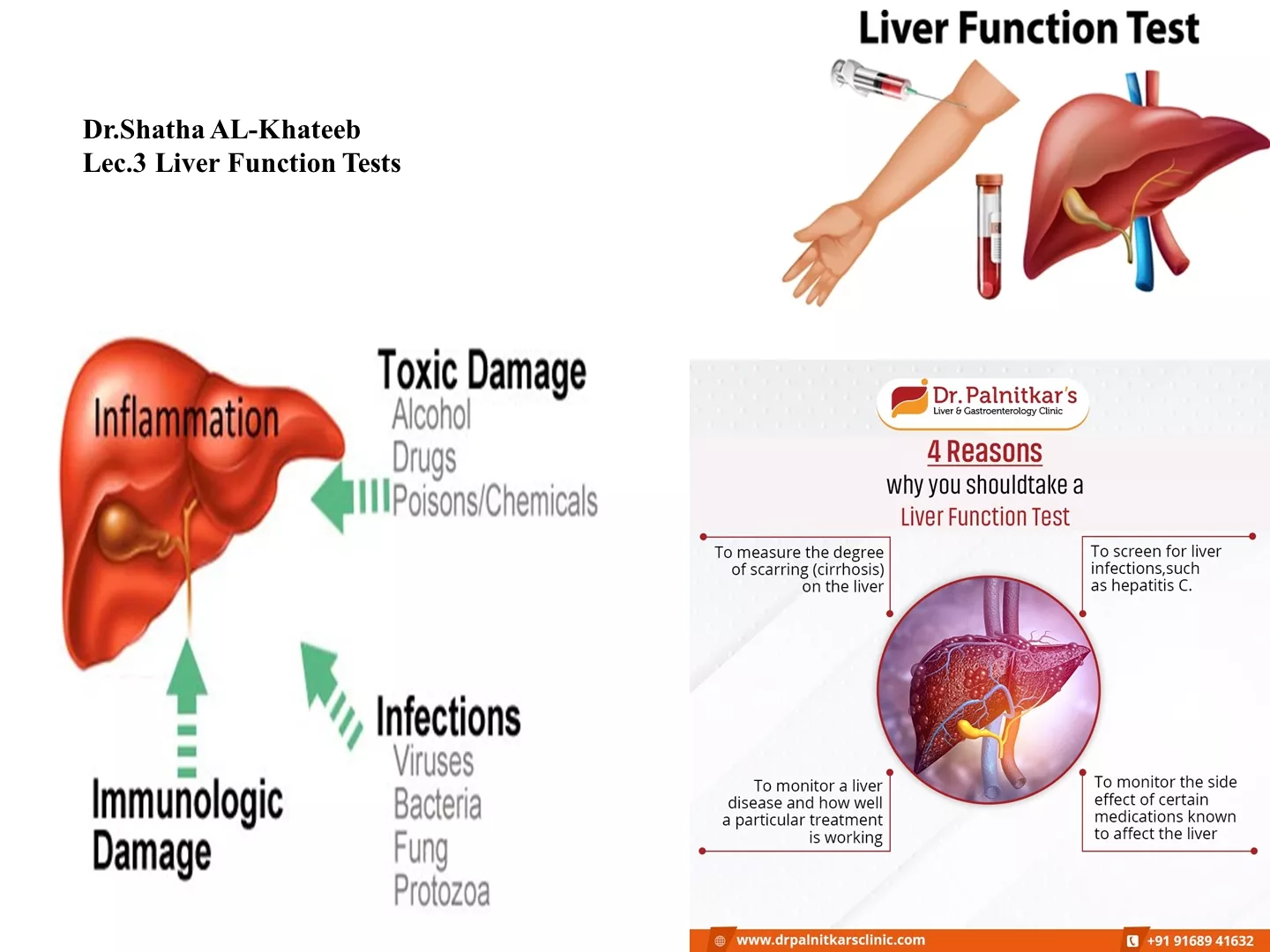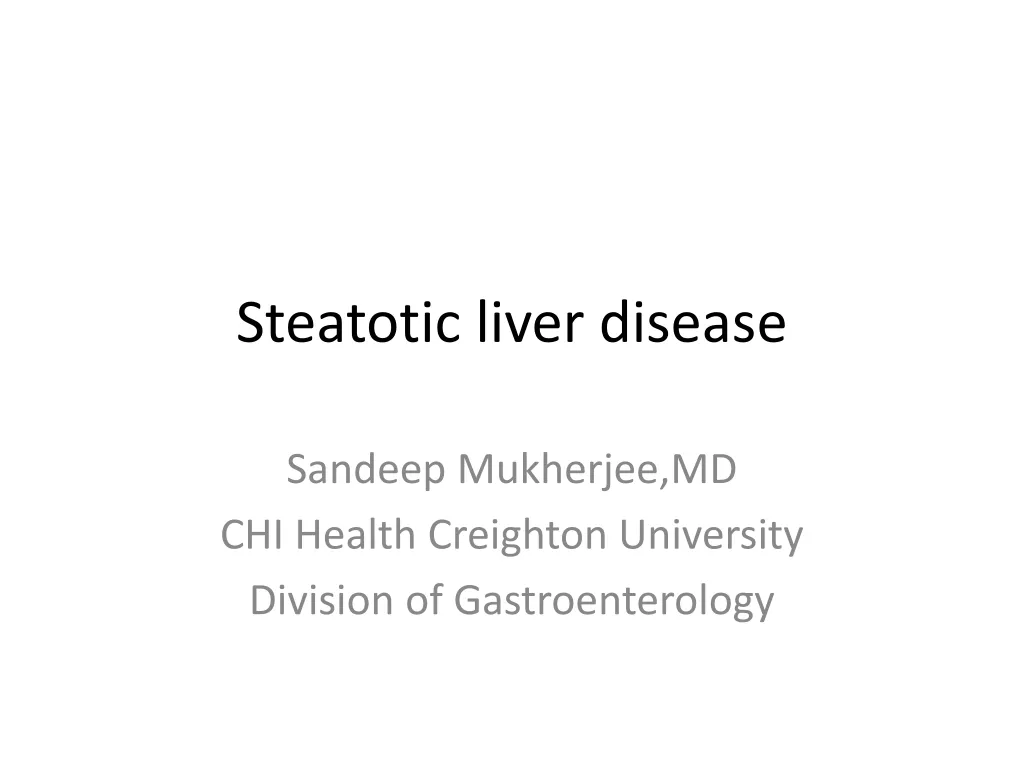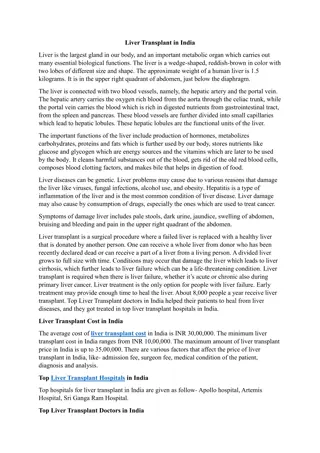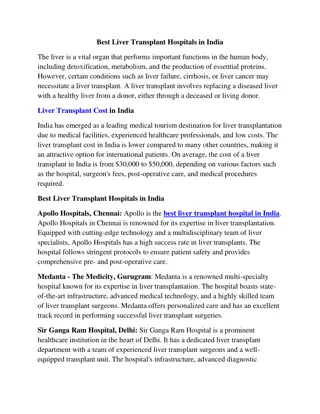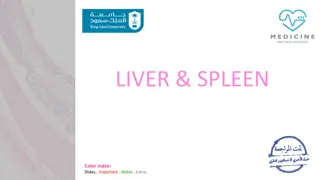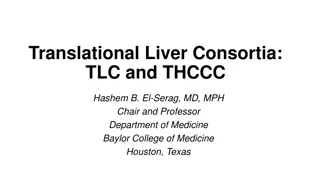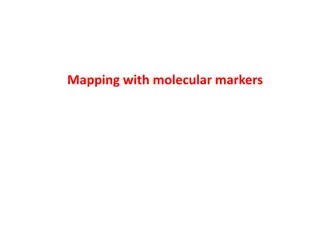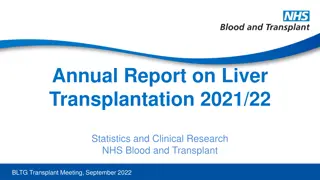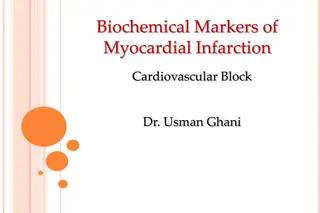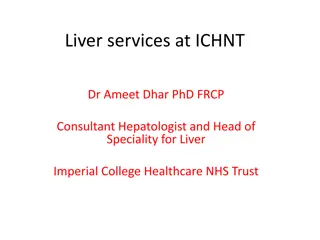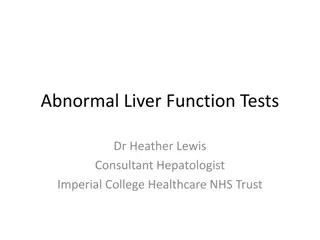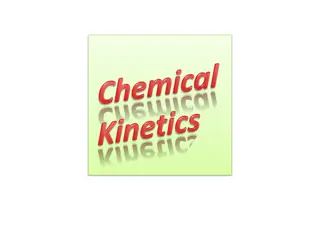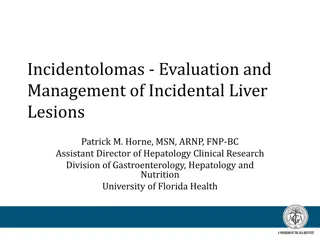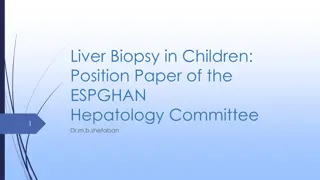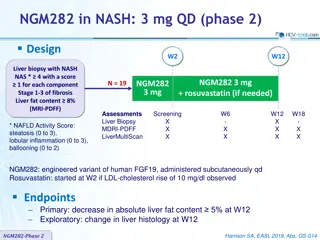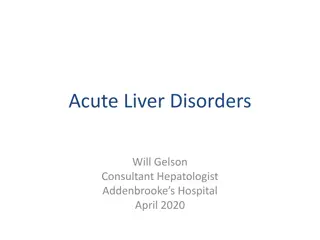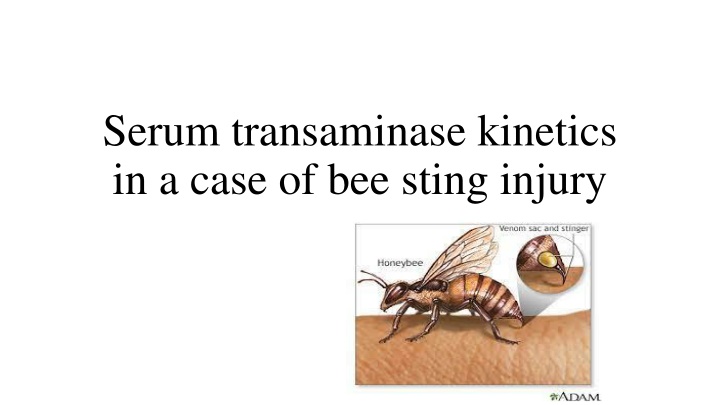
Serum Transaminase Kinetics in Bee Sting Injury
Explore the kinetics of serum transaminase levels in a 55-year-old male following a bee sting injury. The case presents liver injury markers, including total bilirubin, AST, and ALT, which increased post-injury and gradually returned to normal levels. Treatment involved antibiotics, steroids, and glutathione to manage complications associated with bee venom. Bee sting venom can induce liver injury, kidney damage, coagulation issues, and anaphylactic reactions. This study sheds light on the dynamics of liver markers post-bee sting exposure.
Download Presentation

Please find below an Image/Link to download the presentation.
The content on the website is provided AS IS for your information and personal use only. It may not be sold, licensed, or shared on other websites without obtaining consent from the author. If you encounter any issues during the download, it is possible that the publisher has removed the file from their server.
You are allowed to download the files provided on this website for personal or commercial use, subject to the condition that they are used lawfully. All files are the property of their respective owners.
The content on the website is provided AS IS for your information and personal use only. It may not be sold, licensed, or shared on other websites without obtaining consent from the author.
E N D
Presentation Transcript
Serum transaminase kinetics in a case of bee sting injury
Introduction Bee sting patients are not common worldwide Cases had been reported -Thailand, Vietnam. Bee sting-fatal complications. The peptides and enzymes present in bee venom are found to be responsible for anaphylaxis.
Bee venom - melitin, along with phospholipase A2 is responsible for major complications. We intend to discuss the release kinetics of liver injury in a 55- year-old male following bee sting by swarm of bees.
Case presentation A 55-year male was brought with history of bee sting (more than 50bees). He had complaints of severe pain and burning sensation over the bite sites. He was conscious and oriented. He had complaints of fatigue, and swelling over the bilateral upper and lower limbs. On Examination - multiple bite sites associated with tenderness, redness, and swelling Pulse rate- 88bpm Blood Pressure- 100/70mmHg
Systemic Examination: CVS RS NAD P/A
Investigation Mild increase in the level of total bilirubin, alanine transaminase (ALT) and aspartate aminotransferase (AST) were noticed in Day 1. Total bilirubin was found to rise since day 1, reaching its peak on day 3 and returned back normal on day 14 whereas alanine transaminase (ALT) and aspartate aminotransferase (AST) also found to rose from the day 1 but reached their peak on day 4, returning back normal on day 16.
Treatment He was managed with antibiotics, steroids, glutathione.
Discussion Bee sting venom will lead to liver injury, kidney injury, coagulation problems and anaphylactic reactions in addition to local reaction like cellulitis and edema. In our case we observed the release kinetics of liver markers. There was an increase in total bilirubin, AST, ALT from the day 1 and it has reached its peak by day 4 and returned back normal by day 16. We revealed that Patient liver enzymes started to raise slowly from the day 1.
A study on release kinetics of liver markers done in patients who underwent apitherapy by Adel Nazmi Alqutub et al showed that the clinical jaundice was seen after 3rd week of apithearpy with elevation of liver enzymes and returned back normal by 8weeks. This difference in release of liver markers might be due to amount of bee venom inoculated in apitherapy and bee sting injury as in apitherapy only few bees are used for envenomation and in a case of bee sting injury, huge bulk of bee will inoculate the venom.
Bee venom is composed of various toxins like melittin, apamin, mast cell degranulating peptide, adalopin, phospholipase A2 and hyaluronidase. Among them, mellitin and phospholipase A2 are responsible for most of the complication seen in bee sting.
Michael J.Schumacher MB et al in his study he concluded that if the sting is removed within few min after autotomization can reduce the venom induced toxicity. Toxicity is directly proportional to amount of venom delivered after stinging event.
Learning points Markers of liver cell injury raised from day 1 and becomes normal by end of 2nd week which may be mostly attributed by direct toxic injury bee venom compounds like mellitin and phospholipase A2. Effective and timely management of toxicity may safeguard the hepatocytes and reduce the morbidity.
References Rim Wehbe , Jacinthe Frangieh, Mohamad Rima, Dany El Obeid, Jean-Marc Sabatier and Ziad Fajloun. Bee Venom: Overview of Main Compounds and Bioactivities for Therapeutic Interests. Molecules 2019, 24, 2997; doi:10.3390/molecules24162997 Xie C, Xu S, Ding F, Xie M, Lv J, et al. (2013) Clinical Features of Severe Wasp Sting Patients with Dominantly Toxic Reaction: Analysis of 1091 Cases. PLoS ONE 8(12): e83164. Srinivasa Kaligonahall Venkataramanappa, Amban Gowda, Srinivas Raju, and Vijeth Harihar. An Unusual Case of Bilateral Empyema Associated with Bee Sting. Hindawi Publishing Corporation Case Reports in Medicine Volume 2014, Article ID 985720 Adel Nazmi Alqutub, Ibrahim Masoodi, Khalid Alsayari, Ahmed Alomair. Bee sting therapy- induced hepatotoxicity: A case report. World J Hepatol 2011; 3(10): 268-270. Lim P, Tan IK, Feng PH. Elevated serum enzymes in patients with wasp/bee sting and their clinical significance. Clin Chim Acta 1976; 66: 405-409.

